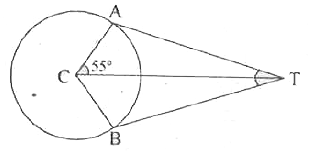यदि O→O− तथा O→O2−इलेक्ट्रान लब्धि ऐन्थैल्पी मान पता हो, जो क्रमश: 141 तथा 702 kJmol−1 है, तो आप कैसे स्पष्ट कर सकते हैं कि O2− स्पीशीज वाले ऑक्साइड अधिक बनते हैं न कि O− वाले ?
ऑक्सीजन के द्वारा किसी धातु से अभिक्रिया करने पर निम्न प्रकार के यौगिकों का निर्माण होता है। (i) M2O (ii) MO (iii) MO2 उपरोक्त यौगिकों के निर्माण में निम्न पद सम्मिलित होते हैं-
M(g)ΔiH1−−−→M+(g)ΔiM2−−−→M+(g)
O(g)ΔegH1−−−→O−ΔegH2−−−−→(g)O2−(g)
2Mg+(g)+O2−(g)जालकऊर्जा−−−−−−−−−→M2O(s)
M2+(g)+O2−(g)जालकऊर्जा−−−−−−−−−→MO(g)
M++(g)+2O−जालकऊर्जा−−−−−−−−−−−→(g)MO2(g)
हम जानते हैं कि ΔiH1 की तुलना में ΔiH2 का मान काफी अधिक होता है तथा ΔegH1 की तुलना में ΔegH2 का भान धनात्मक होता है परन्तु जब MO तथा MO2 यौगिकों का निर्माण होता है तो MO के प्रत्येक आयन पर आवेश अधिक होने के कारण इससे प्राप्त होने वाली जालक ऊर्जा MO2 से प्राप्त होने वाली जालक ऊर्जा की तुलना में काफी उच्च होती हैं। अत: ऊष्मीय रूप से MO का निर्माण MO2 से अधिक अनुकुल होता है। इस कारण ऑक्सीजिन O2− स्पेशोज बाले ऑक्साइड अधिक बनाता है ने कि O− स्पशिज वाले अक्साइड l
Topper's Solved these Questions
- p - ब्लॉक के तत्व Book:MITTAL PUBLICATIONChapter:p - ब्लॉक के तत्व Exercise:पाठ्यपुस्तक के अभयास प्रश्न (निवन्धात्मक प्रश्न)
Explore 2 Videos
- p - ब्लॉक के तत्व Book:MITTAL PUBLICATIONChapter:p - ब्लॉक के तत्व Exercise:अन्य महत्व प्रश्न एवं उत्तर (अति ळघु उत्तरीय प्रश्न)( वर्ग 15 : नाइट्रोजन परिवार के तत्व)
Explore 68 Videos
- p - ब्लॉक के तत्व Book:MITTAL PUBLICATIONChapter:p - ब्लॉक के तत्व Exercise:पाठ्यपुस्तक के अभयास प्रश्न (अति लघुत्तरात्मक)
Explore 30 Videos
- d-एवं f-ब्लॉक के तत्वBook:MITTAL PUBLICATIONChapter:d-एवं f-ब्लॉक के तत्वExercise:विभिन्न प्रतियोगी परीक्षाओं के लिए प्रश्न
Explore 40 Videos
- उपसहसंयोजक योगिकBook:MITTAL PUBLICATIONChapter:उपसहसंयोजक योगिकExercise:TEST YOUR SKILLS
Explore 17 Videos
Similar Questions
वर्ग 15 के तत्त्वों के सामान्य गुणधर्मों को उनके इलेक्ट्रॉनिक विन्यास, ऑक्सीकरण अवस्था, परमाणिविक आकार, आयनन ऐन्थेल्पी तथा विद्युत् ऋणात्मकता के संदर्भ में विवेचना कीजिए।
View Solutionपीले फॉस्फोरस की अपेक्षा लाल फॉस्फोरस का घनत्व अधिक होता है तथा रासायनिक रूप से यह कम क्रियाशील है, क्यों?
View Solutionट्राईहेलाइडों से पेण्टा हैलाइड अधिक सहसंयोजी क्यों होते हैं?
View Solutionनिम्न कथनों में से कौन-सा लैन्थेनॉन के संदर्भ में गलत है ?
View Solutionनिम्न के पूर्ण नाम एवं संरचना लिखिए -
EDTA4−
View SolutionKnowing the electron gain enthalpy values for O rarr O^(Ө) and O rarr O^(2-) as - 141 kJ mol^-1 and + 702 kJ mol^-1 respectively, how can you account for the formation of a large number of oxides having O^(2-) species and not O^(Ө) ?
View SolutionKnowing the electron gain enthalpy values for O to O^(-) " and " O to O^(2-) " as " -141 " kJ mol"^(-1) " and " 702 " kJ mol"^(-1) respectively, how can you account for the formation of a large number of oxides having O^(2-) species and not O^(-) ?
View Solutionयदि O→O− तथा O→O2− के इलेक्ट्रॉन लब्धि एन्थैल्पी मान पता हो , जो क्रमशः 141 तथा 702kJmol−1 है , आप कैसे स्पष्ट कर सकते हैं कि O2− स्पीशीज वाले ऑक्साइड अधिक बनते हैं। न कि O− वाले।
(संकेत – यौगिको के बनने में जालक ऊर्जा कारक को ध्यान में रखिए)
View SolutionKnowing the electron gain enthalpy values for O→OӨ and O→O2− as −141kJmol−1 and +702kJmol−1 respectively, how can you account for the formation of a large number of oxides having O2− species and not OӨ ?
View Solutionयदि O मूल बिन्दु तथा A(a,b,c) है तो A से जाने वाले एवं OA लम्ब समतल का समीकरण है -
View Solutionसंलगन आकृति में AT और BT दो स्पर्श रेखाएं है तथा वृत्त का केंद्र O है। यदि ∠AOT=55∘ हो ,तो ∠APB का मान क्या होगा ?

View SolutionKnowing the electron gain enthalpy values for O to O^(-) and O to O^(2-) as -141 and "702 kJ mol"^(-1) respectively, how can you account for the formation of a large number of oxides having O^(2-) species and not O^(-) ?
View SolutionKnowing the electron gain enthalpy values for O to O^(-) and O to O^(2-) as - 141 and 702 kJ "mol"^(-1) respectively, how can you account for the formation of a large number of oxides having O^(2-) species and not O^(-) ?
View SolutionKnowing the electron gain enthalpy values for O to O^(-) and O to O^(2-) as -141 and 702 kJ " mol"^(-1) respectively , how can you account for the formation of a large number of oxides having O^(2-) species and not O^(-) ?
View SolutionKnowing the electron gain enthalpy values for O rarr O^(Ө) and O rarr O^(2-) as - 141 kJ mol^-1 and + 702 kJ mol^-1 respectively, how can you account for the formation of a large number of oxides having O^(2-) species and not O^(Ө) ?
View SolutionKnowing the electron gain enthalpy values for O→O− and O→O2− as -141 and 702 kj mol-1 respectively, how can you account for the formation of a large number of oxides having O2− species and not O− ?
View Solution